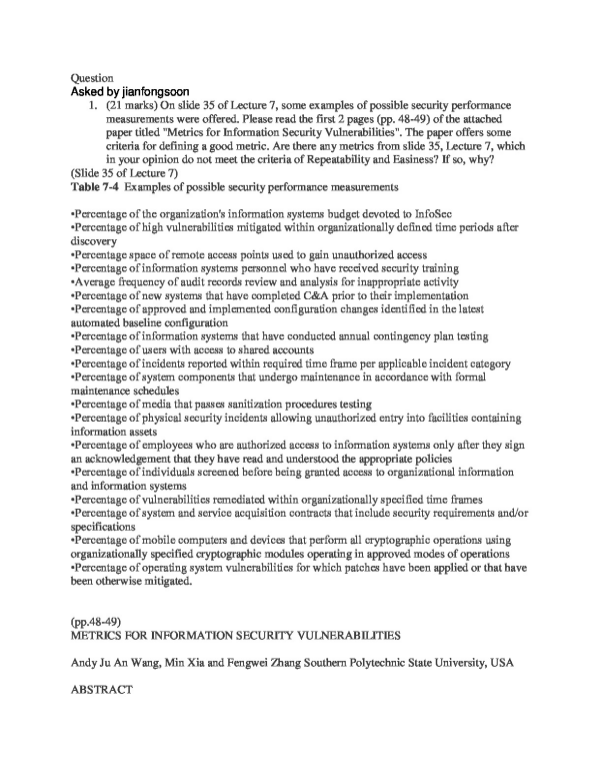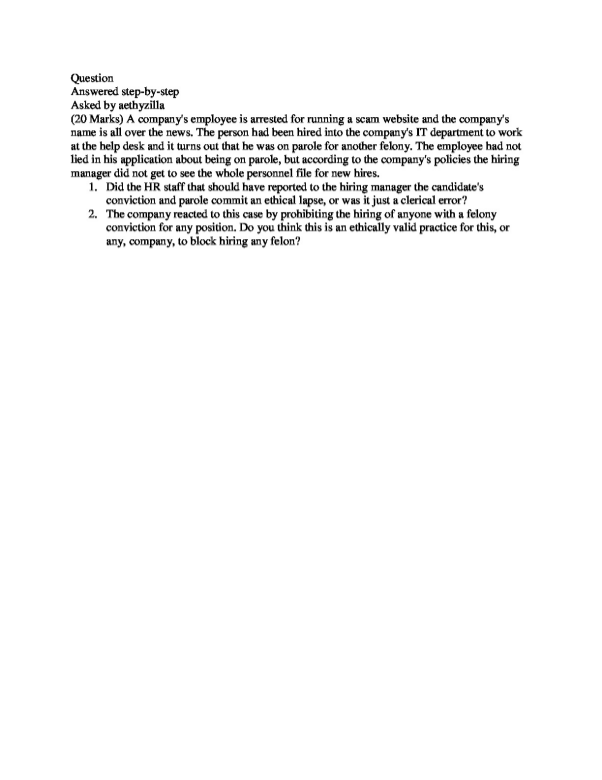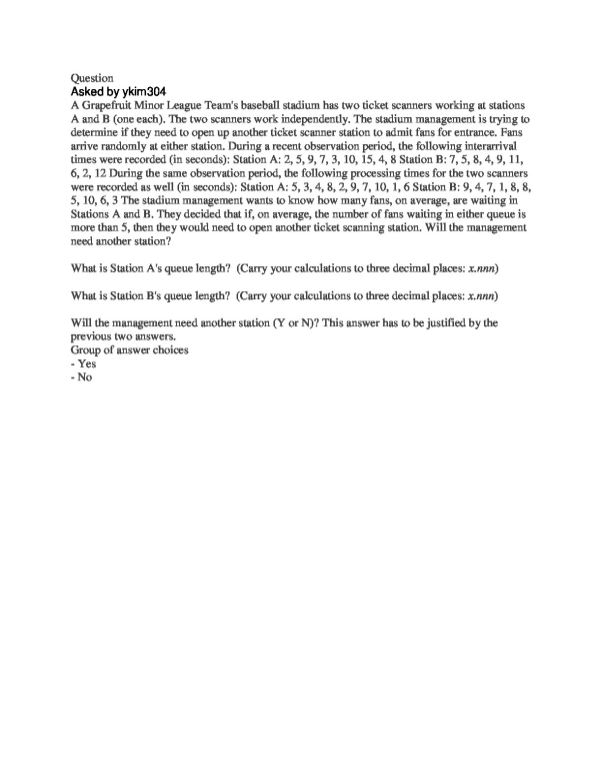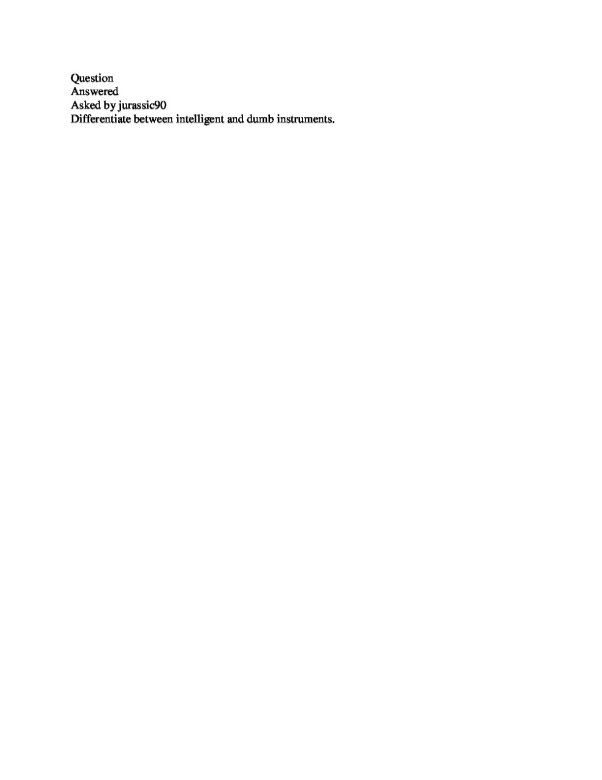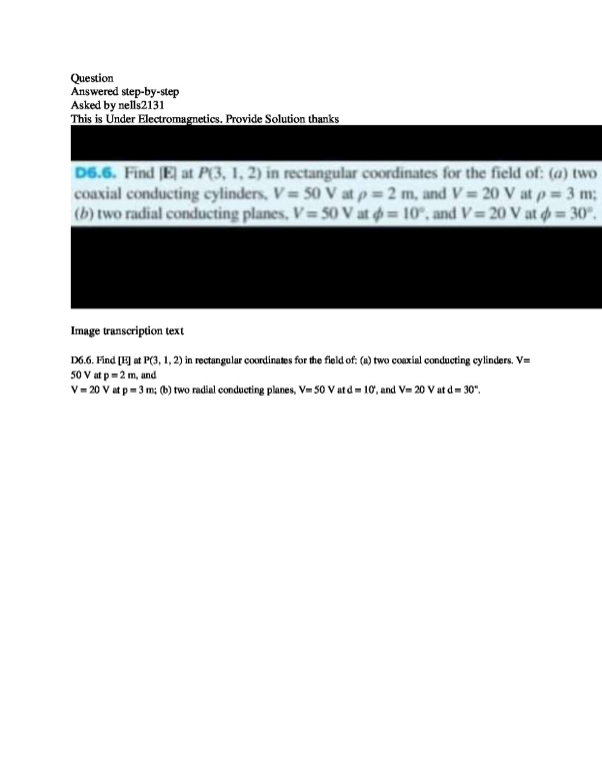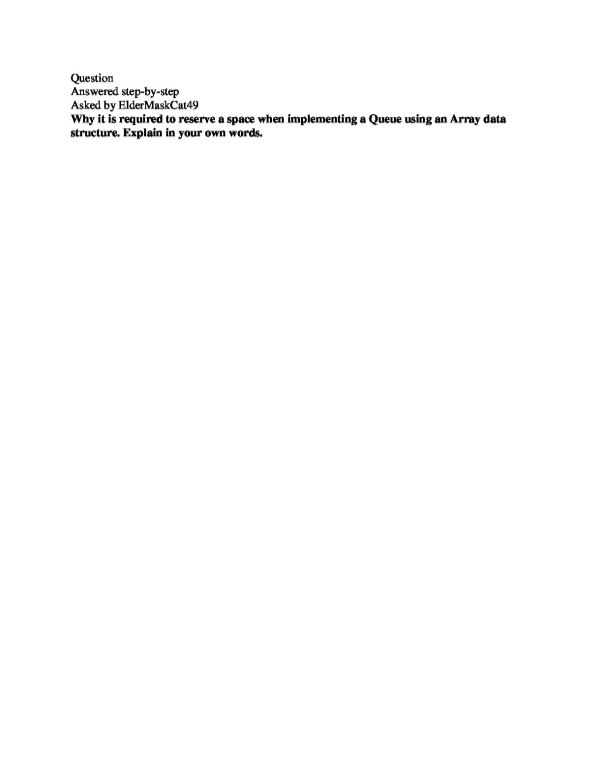QuestionAnswered step-by-stepInstructions: Select the most appropriate response. 1.Which code...Instructions: Select the most appropriate response.1. Which code would be supported as a medical necessity for a male patient with a diagnosis of hypercholesterolemia?a. 80074b. 80061c. 80055d. 800692. A patient appearing pale, diaphoretic, and in acute distres
...[Show More]
Question
Answered step-by-step
Instructions: Select the most appropriate response. 1.Which code...
Instructions: Select the most appropriate response.
1. Which code would be supported as a medical necessity for a male patient with a diagnosis of hypercholesterolemia?
a. 80074
b. 80061
c. 80055
d. 80069
2. A patient appearing pale, diaphoretic, and in acute distress is assessed. The physician notes limited chest expansion, scattered bilateral wheezes, pulse 112 and regular, and respirations 22 with some shortness of breath. A diagnosis of bacterial endocarditis is given. Select the appropriate code(s).
a. I33.9, R61, R06.02
b. I33.9
c. I33.0
d. I33.0, R61, R06.02
3. A patient receives a chest x-ray. Which code would support medical necessity for this procedure?
a. R47.81
b. R07.9
c. R50.9
d. R.11.10
4. The patient was seen in the office for abdominal cramping. A hemoccult test was positive for blood in the stool. The patient underwent proctosigmoidoscopy with biopsy two days later, and carcinoma of the colon was diagnosed. Select the appropriate ICD-10-CM and CPT codes to be reported on the proctoscopy claim.
a. C18.9, 82270, 45305
b. R10.0, c18.8, 82270, 45305
c. R10.84, C18.2, 82270, 45305
d. R10.819, C18.7, 82270, 45305
5. The patient was treated in the office for urinary frequency with dysuria, sore throat with cough, and headaches. The urinalysis was negative, and the rapid strep test was positive for Streptococcus infection. The patient was placed on antibiotics and was scheduled to be seen in 10 days. Select the appropriate ICD-10-CM and CPT codes.
a. R35.8, R30.0, B95.0, 81000, 86403
b. R35.0, R30.0, B95.5, 81000, 86403
c. R35.8, R30.0, B95.4, 81000, 86403
d. R35.0, R35.8, B95.5, 81000, 86403
6. The patient was treated in the office to rule out pneumonia. She had been experiencing wheezing and congestion, and her respirations were labored. The chest x-ray done in the office was positive for pneumonia. Select the appropriate ICD-10-CM and CPT codes.
a. J18.9, R06, R09.89, 71045
b. J18.8, R06.2, R09.89, 71048
c. J18.8, 71046
d. J18.9, 71045
7. The doctor treated the patient in the nursing facility for the second time since she was admitted. The patient complained of malaise. It was noted that the patient had a cough as well as a fever of 103°F and that her pharynx was red in appearance. Select the appropriate code(s).
a. J11.16
b. J04.0
c. R35.83, R05, R50.9
d. R53.81, R05, R50.9
8. A surgeon performs neuroplasty of the median nerve at the carpal tunnel, right hand. Which code would support medical necessity for this procedure?
a. G56.01
b. S62.101A
c. M19.90
d. G51.0
9. The patient was treated in the emergency department for chills and fever. The physician noted left lower abdominal quadrant pain and tenderness. The physician diagnosed acute diverticulitis. Select the appropriate code(s).
a. K57.90, R50.9, R10.814
b. K57.92
c. K57.90
d. K57.92, R50.9, R10.814
10. A patient undergoes a laparoscopic cholecystectomy. Which code would support medical necessity for this procedure?
a. K74.60
b. K35.80
c. K81.0
d. N20.0
11. A patient with chronic cholecystitis and cholelithiasis without obstruction undergoes laparoscopic cholecystectomy with cholangiography. During the procedure, the surgeon performs a biopsy of a suspicious liver cyst. Select the appropriate ICD-10-CM and CPT codes.
a. K80.00, K76.89, 47563, 47001-59
b. K80.20, K76.89, 47562, 47001-59
c. K80.10, K76.89, 47563, 47001-59
d. K80.10, K76.89, 47562, 47001-59
12. Select the appropriate codes for diagnostic arthroscopy, right knee and open repair, right knee, collateral and cruciate ligaments.
a. 27405-RT, 27407-RT-51, 29870-RT-59
b. 27409-RT, 29871-RT-59
c. 27405-RT, 27407-RT-51, 29871-RT-59
d. 27405-RT, 29870-RT-59
13. The nurse practitioner orders a urinalysis. Which code would support medical necessity for this procedure?
a. K21.9
b. N15.9
c. R06.02
d. S93.409A
14. A patient with a displaced supracondylar fracture, left humerus, undergoes closed reduction with manipulation and casting. Select the appropriate ICD-10-CM and CPT codes.
a. S42.412A, 29065-LT
b. S42.412A, 24577-LT
c. S42.411A, 29065-LT
d. S42.411A, 24577-LT
15. A 68-year-old patient stated that "most mornings he wakes up with a headache, has trouble staying awake, and often falls asleep in the middle of the morning." After an unattended minimum sleep study showed several episodes of desaturation and apnea, he was diagnosed with obstructive sleep apnea with hypoxia and ordered to undergo an attended full sleep study. Select the appropriate ICD-10-CM and CPT codes.
a. G47.30, 95801
b. G47. 33, 95801, 95807
c. G47.30, G47.34, 95801
d. G47.33, G47.34, 95801
16. A 96-year-old woman was admitted to the emergency room complaining of shortness of breath. She stated, "My legs look like sausages because they are so swollen, and I've gained five pounds in the last couple of days." The physician diagnoses her with congestive heart failure, and the nurse administers 40 mg Lasix via IV push. Select the appropriate ICD-10-CM and CPT codes.
a. I50.9, 96365
b. I50.9, 96374
c. I50.20, 96365
d. I50.20, 96374
17. A 43-year-old man presents to the emergency department complaining of severe pain in his lower back. He states his "back hurt a little bit last night after doing some heavy lifting at work, but this morning the pain was terrible." After a problem-focused history and exam, the physician diagnoses him with lumbar sprain. Select the appropriate ICD-10-CM and CPT codes.
a. S33.5xxA, 99282
b. S33.5xxA, 99281
c. S39.012A, 99282
d. S39.012A, 99281
18. Which are used to compare units of service (UOS) with CPT and HCPCS level II codes reported on claims and indicate the maximum number of UOS allowable by the same provider for the same beneficiary on the same date of service under most circumstances?
a. MAC
b. TOS
c. MUE
d. POS
19. Revenue cycle management includes inpatient DRG coding validation, which is performed by payers to:
a. Establish education and training for health care providers
b. Confirm the accuracy of hospital coding and reimbursement
c. Automate the clinical documentation improvement process
d. Comply with statutes that identify penalties to be paid
20. As part of clinical documentation improvement, a patient case review resulted in the determination that a patient's previous hospital discharge was inappropriate because the patient was transported back to the hospital via ambulance and admitted through the emergency department within three days of the previous discharge; this process is called a __________ audit.
a. Coding
b. Transfer
c. Readmission
d. Level of care
21. Which has become a tool for accurate coding because it is software that uses natural-language processing to locate and analyze diagnoses and procedures in the patient record and assign ICD-10-CM, ICD-10-PCS, CPT, and HCPCS level II codes to them?
a. Medical abstracting software
b. Encoder software
c. Computer-assisted coding
d. Electronic medical record
Share Question
Comments (3)
[Show Less]
